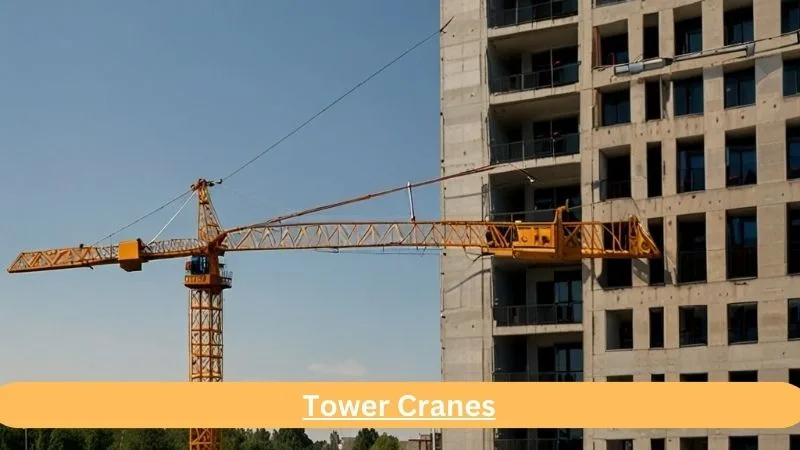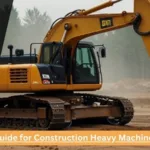Crane Services for Safe Lifting
Introduction:
Crane services are the foundation of any business, providing the necessary capacity to lift and move heavy objects safely and efficiently. This comprehensive guide explores different aspects of crane servicing, including safety, crane types, training and more. Crane services use cranes to lift, move, and place heavy items correctly and safely. These services are required in construction, transportation, manufacturing and other labour-intensive industries. Cranes can increase efficiency, reduce manual labour, and increase safety in daily heavy-lifting tasks.
Types of Cranes and their Uses:
Tower Cranes:

Tower cranes are placed in concrete blocks on the ground (sometimes on the side of the building). They provide the best height and carrying capacity combination, making them ideal for constructing tall buildings and skyscrapers. These include a mast (tower) for stability, a turning device, a jib and a counter jib.
Mobile Cranes:
Mobile Cranes are a variety of machines mounted on rubber-thin or crawler tracks, providing mobility and flexibility. They can be driven to various locations and are appropriate for multiple lifting jobs such as loading and unloading containers, moving household appliances and other general lifting tasks.
Overhead Cranes:
Overhead or overhead cranes are often found in industrial environments such as factories and warehouses. They contain affiliate links and links to link spaces. The elevator moves along the bridge, ensuring the correct movement of on-site equipment.
Also Read: A Guide for Construction Heavy Machinery
Crawler Cranes:
Crane crawler cranes are fixed on an array of crawlers (tracks) that provide stability and the ability to move in different directions. They are handy for heavy construction, such as bridges and large projects, because they can lift heavy objects and quickly move over rough terrain.
Importance of Crane Services in Construction:
Crane services are essential to the construction, lifting and placing services for heavy loads such as steel beams, concrete blocks, and large equipment. They effectively speed up the construction process and reduce the need for physical labour. Additionally, cranes increase site safety by reducing risks associated with lifting heavy loads.
Safety Protocols in Crane Operations:
Safety is of great importance when using a crane. Following safety procedures can help prevent accidents and keep workers healthy. Important security measures include:
– Regular Inspection: Daily inspections ensure the crane’s mechanical and electrical systems function correctly.
– Load Limits: Strictly comply with the load capacity of the crane to avoid overloading.
– Proper Training: Ensure that all crane and signal operators are adequately trained and certified.
– Safety Gears: Wear personal protective equipment (PPE) such as a helmet, gloves and high visibility vest.
– Site Assessment: Assess potential hazards at the work site and provide a solid foundation for crane operations.
Crane Operation Training and Certificate:
Crane operators must be appropriately trained and certified. This training covers everything from crane dynamics to load calculations, emergency procedures, and correct operation. Certification ensures workers understand safety regulations and can operate various types of cranes.
Loading Capacity and Weight Calculation:
Weight measurement is essential to avoid overloading the crane, which could cause accidents and product damage. This includes:
– Understanding the Load Chart: Every crane has a load chart that shows the maximum height at which it can safely lift at various lengths and angles.
– Calculating load weight: Includes cargo weight, hardware, and other accessories.
– Safety Margins: Always work below the maximum allowable safety margin.
Rigging and Slinging Techniques:
Rigging must prepare the load for lifting. Slinging refers to the actual lifting method. Hardware and slings are essential to ensure stability and safety during lifting. Technology includes:
– Choose the suitable sling Based on the cargo’s weight, shape, and characteristics.
– Balancing the Load: To prevent swaying or tipping, keep the load balanced.
– Secure the load: Use shackles, hooks, and other rigging equipment.
Environmental Consideration:

Environmental elements, including the direction of the wind, the climate, and soil stability, should be taken into account in crane operation. Bad weather conditions can affect the stability and lifting capacity of the crane, requiring careful planning and sometimes delaying work until conditions improve.
Technological Advancement in Crane Services:
Modern cranes are equipped with technology that will increase safety and efficiency. Innovations include:
– Automation System: This is for accurate control and location.
– Telematics: Provides information about crane operating time and operation.
– Safety Sensor: Detects overloads and other dangers.
Preventive Maintenance of Cranes:
Frequent upkeep is necessary to guarantee the durability and safety of your crane. This includes:
– Lubrication: Keep moving parts well lubricated to reduce wear.
– Component Inspection: Check for signs of wear, cracks or damage.
– Hydraulic System Checks: Make sure the hydraulic system is working correctly.
Legal and Regulatory Compliance:
Crane operation is strictly controlled to protect safety and the environment. Local, national and international standards must be complied with. This includes:
– OSHA Regulations: The Agency for Health and Safety at Work (OSHA) in the United States has specific rules about crane operations and safety regulations.
– ISO Standard: International standards for crane safety and performance.
Case Studies and Best Practices:
Examining case studies of completed crane operations can provide recommendations for best practices. These examples show good strategies for overcoming common problems and implementing security measures. Learning from real-life situations can help improve crane operations in the future.
Conclusion:
As a result, crane services are essential for many industries to lift and transport heavy goods safely. Ensuring safety includes strict procedures, employee training, and compliance with load restrictions. Technology and regular maintenance increase the performance and service life of your crane. Following the rules and learning best practices are crucial to reducing risk. Effective crane operation ultimately relies on skill and a commitment to safety.
Crane Services – FAQs:
Ans: In the lifting and rigging industry, the angle must be at least 30° or more. Lifting and rigging experts prefer an angle of 60°. When a multi-leg suspension is typed, it is recorded as 60°.
Ans: Measuring a crane’s lifting capacity tells us how much the crane can lift, including the size of the load, lifting height and lifting angle. The average crane can lift between 10,000 and 60,000 pounds.
Ans: Due to the giant swing of the crane, the crane’s boom or counterweight will hit nearby people. As with falling objects, ensuring the crane is safe and operational at all levels is crucial to preventing such accidents.




Leave a Reply